by Alex Shtaerman
For Dr. Tshombe Walker, it was a journey that began in 1999 at the northwest comer of 106th Street and Park Avenue. A basketball park submerged roughly eight feet below street level offering ample wall space on which graffiti artists from around the world converge as part of an annual pilgrimage. It is here at Harlem’s Graffiti Hall Of Fame that Dr. Walker began documenting an oft-underrepresented aspect of Hip-Hop culture while reaching out to some of the artform’s proponents from around the globe. His quest soon led him to Bedford-Stuyvesant Brooklyn where after initially meeting the famed Deck, he began weaving together a network of artists and writers interested in participating in an independent film documentary; an effort that would materialize nearly a year later in the form of Write Or Die.
Collaborating with fellow New School University colleague LaNa Jones, Dr. Walker set out to film Write Or Die with a budget of roughly $15.000. What resulted is not only one of the grittiest and most vivid representations of Hip-Hop culture in its purest form but also a true testament to the power and perseverance of independent filmmaking.
Taking us on a trip through the lives, neighborhoods and inside the minds of Hip-Hop’s unsung heroes, Write Or Die does little to sugarcoat the harsh reality from which graffiti came to being. Much of the film’s dialogue highlights the underlying political themes that have fueled the innovation in self-expression that is Hip-Hop culture. Through the words and accounts of the writers themselves Write Or Die paints an unforgettable picture of the ongoing struggle waged on the outskirts of society. To many of us these warriors remain nameless, recognized only by the less than proverbial writing on the wall. Write Or Die is more than a documentary; it is a lesson in history, values and politics; a striking rendition of something that for many people does not exist.
Like the essence of Hip-Hop culture, graffiti by its very nature is political, as it is a form of expression that is deemed inappropriate and illegal by the establishment. As Dan 1 of Philly’s O.M.T. Crew bluntly puts it: “The powers that be contain that this is private property. They own this, so therefore we’re destroying their property. You know what I’m saying; in my eyes, private property is stolen land, no matter what”.
Set to an exceptional soundtrack featuring Gangstarr, KRS-1 and Nas, Write Or Die includes candid interviews with writers Merk and Vase 1 (Urban Warriors, Bronx), Lady Pink (Queens). Ket 1 (Brooklyn), Dan 1 (O.M.T. Crew, Philadelphia), LC (Brooklyn), Peek (V.I.C. Crew, Brooklyn). Aspekt (Dortmund, Germany) and Smash (T.E.A.M. Crew, Brooklyn), among others. Currently in the direct distribution stage, Write Or Die is available at vendors throughout Harlem, or by contacting Dr. Walker at tshombe@rcn.com. Both individual and bulk rates are available.
Author of the book The Hip-Hop Worldview, Dr. Walker is currently working on a second edition of Write Or Die as well as a related video project focusing on various aspects of the Hip-Hop community. LaNa Jones is presently co-producing a youth-centered Hip-Hop documentary while working as a freelance videographer and video editor. Both continue to collaborate on ventures stemming from the Write Or Die project.
RIOTSOUND.COM: What were some of your first experiences with Hip-Hop? As far as artists and individuals, who were some of the people who caught your attention and influenced you early on?
DR. TSHOMBE WALKER: My initial encounters with Hip-Hop proper came in the fall of 1979 when The Sugarhill Gang released the super classic 12″ single Rapper’s Delight. The community had been prepared for the new sound by the “toasts” of ultra old-school rappers like Dolemite, and Blowfly. I first heard the record, fly rhymes and a sample of Chic’s Goodtimes, on my way to school. My mind was fully blown; it was the illest thing that I’d ever heard. One evening my dad came home with a copy of that record and I played it for weeks, memorized every line. I played that record so much that the needle wore out on my parents’ record player.
RIOTSOUND.COM: Who are some of the artists today that you continue to identify with and view as carrying the true school torch forward?
DR. TSHOMBE WALKER: Artists like Common, J-5, Erykah Badu, Lauryn Hill, Wu-Tang Clan, DITC, BDP, MOP, Roots, Boot Camp, Dead Prez, Gangstarr, Too Short, X-Men, Scarface, Outkast, Ras Kass, are all representatives of the culture that is Hip-Hop.
RIOTSOUND.COM: What influenced you to do Write Or Die?
DR. TSHOMBE WALKER: Growing up in the Black community I was accustomed to tags representing gangs marking the neighborhood. Later, with the introduction of Hip-Hop I began to see that guys would throw up their names along the bus lines and on the buses themselves. Around 1983 masterpieces started to appear in my neighborhood and I was fascinated. In ninth grade my man Roel blessed me with my first hand style and I’ve toyed with it ever since.
My influences for Write Or Die come from many places. Some of the more obvious ones are Wild Style, Style Wars, Beat Street, Grandmaster Flash & Melle Met and the Furious Five, Henry Chalfant’s Subway Art, KRS-1, Rakim and the list continues. The primary influence though is really my love and respect for Hip-Hop. Graffiti is simply another aspect of who I am culturally, aesthetically and politically. As an activist scholar I felt that I needed to examine the nature of this often forgotten aspect of the culture.
RIOTSOUND.COM: LL Cool J once said that MCing became the signature art of Hip-Hop since it was the most commercially viable of the four components. How much truth do you feel is in that? Have the other components of Hip-Hop culture suffered because of lacking commercial interest or would you conversely say that graffiti and breaking have persisted as more pure and untainted art forms?
DR. TSHOMBE WALKER: MCing is not the signature art of Hip-Hop, because there is no elemental hierarchy in the culture. The key is to become as proficient in as many arts as one possibly can. If there were a hierarchy of elements, the signature element would he the DJ. The DJ was first; in the beginning there was the beat, there was rhythm. It is the DJ, the post-modern African drummer, without whom there would be no beats and samples to MC or rap over.
Anyone can rap. But only a real Hip-Hop head can MC. Not that all Hip-Hop heads can MC; in fact, I know of many who cannot. But in order to he a master of ceremonies within the Hip-Hop community, one must also be a member of that community. For example, any actor can play the role of a doctor on television or in the movies, but in order to actually be a doctor, one requires intensive training. Similarly the process of rapping can easily be reproduced, but the art of Hip-Hop MCing requires cultural discipline.
MCing is the most marketable aspect of the Hip-Hop culture. The dilemma lies in the fact that true MCs express the ideas and values consistent with those of Black America, thus there is little or no corporate interest in its marketing. The ideas found in Hip-Hop music are fundamentally against racism, sexual exploitation and class-based oppression; these ideas champion true democracy, human equality and reaffirm the dignity of Blacks and all people. It is because these ideas are threatening – not to American ideals, but – to American reality, that there is no platform for Hip-Hop culture as a whole. Since there is an overwhelming popular demand for Hip-Hop music, a music which is implicitly counter capitalist, the corporations which promote, mass-market and distribute the music often substitute culturally dislocated gangster rappers for MCs and gangster rap music for Hip-Hop music.
RIOTSOUND.COM: In 2003 is Hip-Hop political anymore? Many would argue that it’s not given its broad base appeal. Do you feel that there is still a brand of Hip-Hop culture out there that is politically charged or would you say that Hip-Hop has run its political course and now is more about bringing rewards to the people involved with it?
DR. TSHOMBE WALKER: Hip-Hop is in and of itself political, because it is the expression of Black cultural agency. Black politics are a subset of the Black cultural matrix. Where there is Hip-Hop you have the expression of the Black thought. Black thought is composite African thought. Composite African thought was created when various African communities (i.e. Kongo, Mende, Dinka, Yourba) were violently uprooted, dragged across the Atlantic and dumped in the Americas to face the dehumanizing chattel of slavery at the hands of the Europeans. Although the holocaust of European colonization and enslavement ranks among the greatest of crimes against humanity, Black thought survives and continues to set the moral and ethical standard for America and the world in forms of Crispus Attucks, Harriet Tubman, Frederick Douglass, Sojourner Truth, Ida B. Wells, WEB DuBois, Paul Robeson, Rosa Parks, ML King Jr., Malcolm X, Maxine Waters, etc. Unfortunately, Black victims of hegemonic Euro-American thought, political oppression and economic exploitation too often fall prey to the illusory socio-economic rewards that result from self-degradation; thus there is never a shortage of Blacks willing to bow and scrape for a dollar, a title, a degree without regard for the fact that they are being manipulated to lend credence to the myth of Blacks clinging to the lowest rung of humanity. Hip-Hop is simply concerned with, “keepin it real”, or projecting an authentic picture of every dimension of the Black world.
The unfettered Black thought that is Hip-Hop so threatens White supremacist political, social and economic interests that there is a universal thrust by Western cultural institutions to repress it. One such institution is the music industry, which includes print media and commercial radio. The industry claims to develop, promote and distribute Hip-Hop; when, in fact, they are developing the superficial illusion of Hip-Hop while distributing and promoting various forms of rap music celebrating the interests of the West, while deriding Black interests. Remember B.l.G. “Black, and ugly as ever”? His “Ready to Die” philosophy stinks like self-hate, yet the music industry considers this suicidal, misogynistic, pseudo-gangster personality the greatest rapper ever.
It is not enough to rap, spin records, paint and dance. These acts alone do not comprise Hip-Hop. Hip-Hop is an African-American celebration of self. It is manifest as a quality of thought that inspires the rapper to MC, the DJ to rock the breaks, painters to bomb graffiti and the dancers to break. The mechanics and techniques can be imitated and replicated by the hit-men of the Western cultural syndicate such as record executives and gangster rappers, hut the soul of Hip-Hop cannot be dubbed or destroyed. What the industry does is take attention away from Hip-Hop, thus it appears underground while gangster rap is considered mainstream. Gangster rap is so well received in the American music industry because it first confirms America’s feeling of White supremacy by lending credence to the worst stereotypes; and secondly gangster rap expresses the degenerate ideals and values of a violently racist, sexist and classist Euro-American culture.
RIOTSOUND.COM: When you see artists like Nelly and Ja Rule selling millions of records under the Hip-Hop moniker, what is your gut reaction to that?
DR. TSHOMBE WALKER: Fortunately, I know the difference between the two and I am not drawn in by the fraud. I simply choose not to buy, listen to or promote those artists. For the many who are not aware I work to educate them about the real Hip-Hop. It is not necessary to dismiss any artist. What I do is to promote the real, allowing people to make an informed decision to drink either from the clean glass or the dirty glass. Hip-Hop is not for everyone, but for those that want to connect with the Black ethos, Hip-Hop will always be there.
RIOTSOUND.COM: How do you feel about so many of Hip-Hop’s pioneers being left out in the cold when it came time for the big payday?
DR. TSHOMBE WALKER: I do not feel bad about Hip-Hop artists not getting major paydays, that is an extension of Black reality in America (no payday). I feel bad about anyone that contributed to the growth of the country without receiving their just due, Native Americans, Africans, Asians, Latinos, Women, etc. Kool Herc was not out solely for personal gratification. Had he been, we would not have Hip-Hop as we know it. Hip-Hop has always been more about giving than taking, thus I use the term counter-capitalist. It was about bringing joy to the project recreation rooms and free jams in the park. They did it for the kids that could not afford to go to the clubs and discotheques. The payday that the old school receives rests in the advancement of the culture. As the culture is advanced the community will understand the necessity of supporting the pioneers.
RIOTSOUND.COM: What are your views on Hip-Hop culture and electronic music culture crossing over? Both cultures incorporate graff, breaking & DJing. For example, DJ Soulslinger, one of the pioneers of American drum n’ bass affiliates himself with Zulu Nation. How have you seen that relationship developing?
DR. TSHOMBE WALKER: In the early days of Hip-Hop, Blacks and Latinos rocked to punk, electronic disco breaks as well as the electronic sounds of Kraftwerk. Afrika Bambaataa credits Kraftwerk and their hit “Numbers” as his muse for the creation of the super classic Planet Rock. In the early 1990’s The Jungle Brothers of the Universal Zulu Nation are credited with the creation of hip-house with their underground crossover hit “I’ll House You”. The genres known as jungle and drum n’ bass are definitely influenced by Hip-Hop beats, dancing and visual arts.
RIOTSOUND.COM: Name five records you will bump ’till you are seventy-five.
DR. TSHOMBE WALKER: Criminal Minded, It Takes a Nation of Millions to Hold Us Back, Death Certificate, 36 Chambers Enter The Wu-Tang, The Fix.









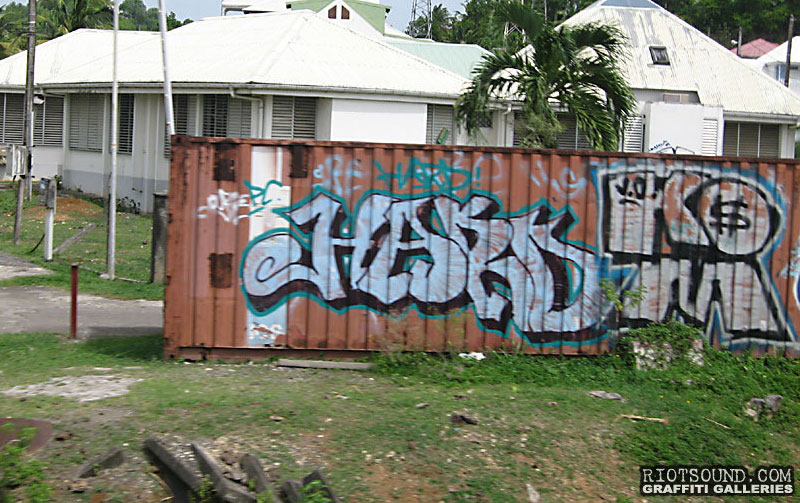

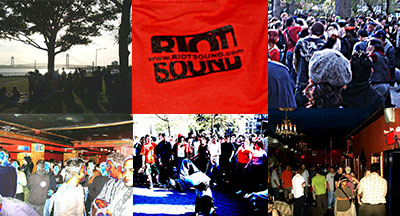
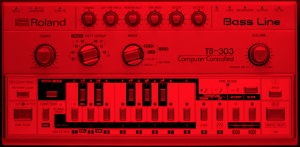














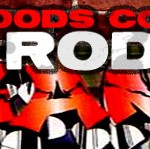

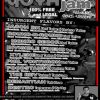



Comments